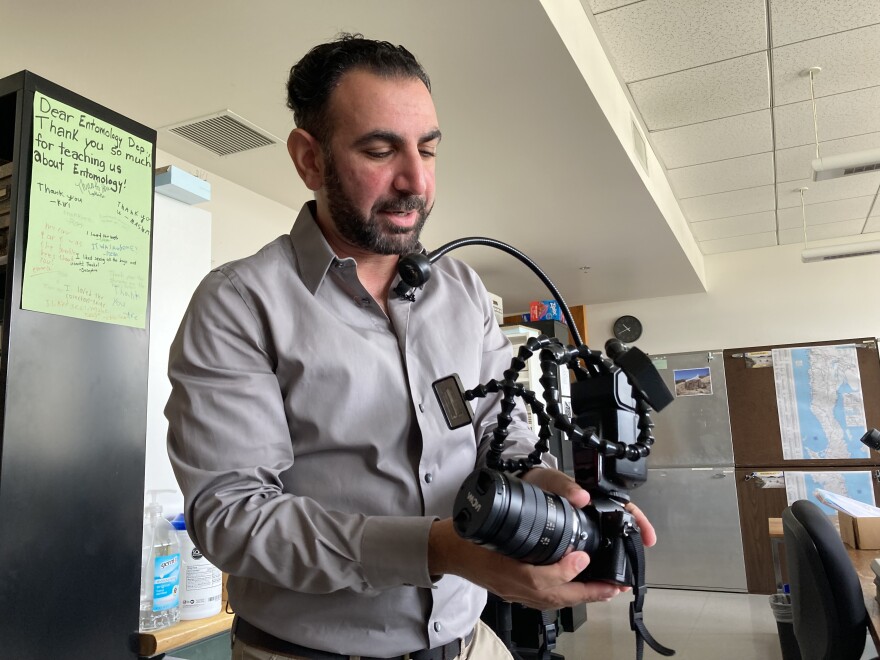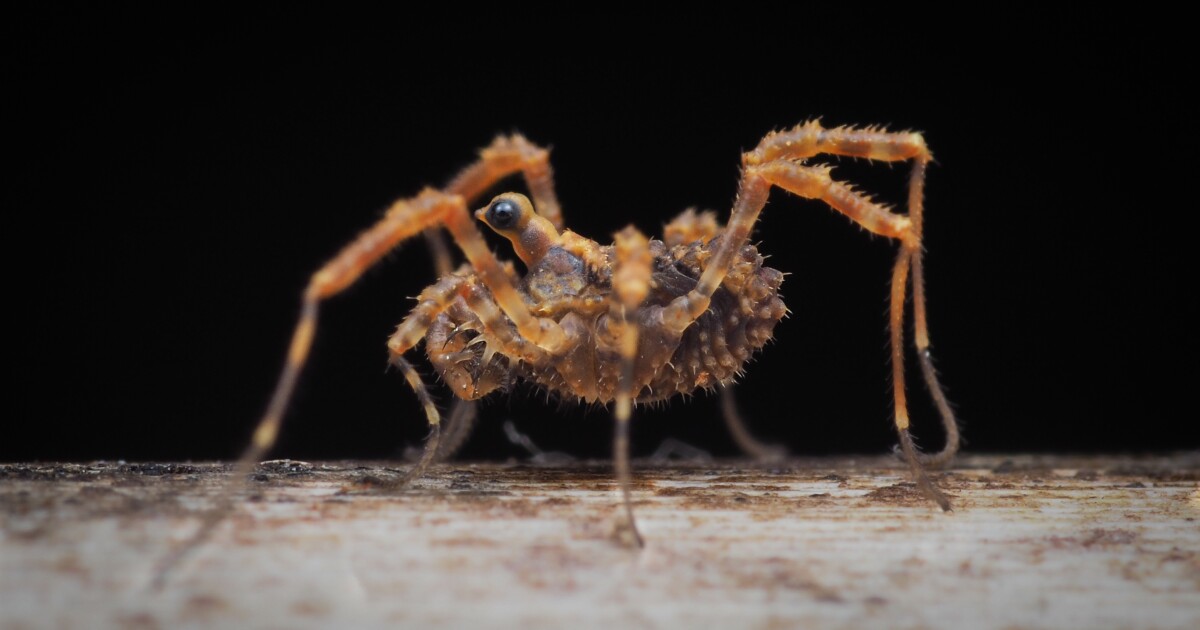[ad_1]
An arachnid from the island of Tasmania is seen above in a photo by Shahan Derkarabetian. Its tall eye-mount, which looks like a neck and a head, is very unusual. And after capturing the rare creature with his camera, the reactions to it have been sort of strange.
“When I put photos of this on social media a lot of people thought this was from the ocean. I had to correct multiple people (who said) ‘That’s crazy! It’s amazing what you can find in the ocean.’”
“This is from underneath a log!” said Derkarabetian, the entomology curator for the San Diego Natural History Museum.

Derkarabetian took up macro photography after he got frustrated with the poor photos he was trying to take through his microscope. He says taking these super-close photographs help you get to know the creatures a lot better.
“You see how they move, you’re paying attention to the fine details of how they look and maybe things you wouldn’t notice from somebody else’s photograph, right?” Derkarabetian said. “When you’re looking through the camera, and you see this weird structure, you want to focus on it.”
Derkarabetian attended San Diego State University and got his Ph.D. from UC Riverside. He spent five years at Harvard as a postdoctoral fellow.
He has focused his studies on arachnids called Opiliones. You may know them best as daddy longlegs or harvestmen. He said the name comes from Leiobunum Vittatum, which is very common in the U.S. and typically appears around the fall harvest.
Opiliones are not spiders and they’re easy to tell apart.
“Spiders will have two body parts. But Opiliones will have those fused. So they are basically a ball with legs,” Derkarabetian said. “Harvestmen don’t have venom. They don’t have fangs. They don’t make silk. They don’t make webs or anything like that and they are completely harmless.”
Harvestmen come in many varieties. Triaenobunus Pilosus is another native of Tasmania. Trogulus Tricarinatus originally came from Europe and it’s now seen along the Eastern Seaboard. Derkarabetian found one in the park where he’d eat lunch while going to Harvard.
Derkarabetian is a Southern California native who fell in love with nature at a very early age, growing up on the edge of development in Rancho Cucamonga. He says, to go into nature, he just had to cross the street.
“There was one day I remember. I wasn’t really paying attention to bugs or anything but I flipped this rock and there was a giant centipede. And it scared me but I couldn’t look away,” he said. “And ever since then I’d be flipping rocks and looking at the rolly pollies and the snails and things so it kind of started there.”
And now he’s collecting those strange, hidden creatures for The Nat in San Diego.
[ad_2]
